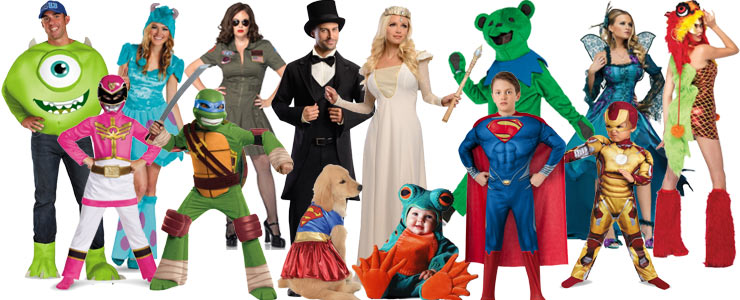 A coven of costumed “witches” gathers for a Halloween portrait around 1910
A coven of costumed “witches” gathers for a Halloween portrait around 1910
It’s everyone’s favorite spooky time of year again…Halloween! The leaves are changing, the days are getting shorter, and we’re starting to have some serious candy cravings. Tonight is the one time of year that it’s actually ok for us to dress up in scary, comical or any kind of ridiculous garb and partake in a wide variety of festivities and traditions.
What started over 2,000 years ago as a Celtic holiday, marking when spirits were thought to walk the Earth as they traveled to the afterlife, has turned into the 2nd most commercialized holiday in America. The National Retail Federation, which has studied the economics of Halloween for the past decade, predicts that close to $7 billion dollars will be spent on Halloween this year! Yes that’s right…7 billion dollars! To put it in perspective, that’s more than the combined GDP of Belize and Liberia. A shout out to all of the animal lovers out there: Pet costumes alone accounted for over $330 million dollars in sales (guilty as charged!) Not even an ailing economy is enough to put a damper on this sugar-laced holiday. NRF President and CEO, Matthew Shay, said that even though Halloween spending is down a bit from it’s peak of $8 billion, as “one of the most beloved and anticipated consumer holidays, Halloween will be far from a bust this year.”
Tracing the commercialization of this wonderfully entertaining evening, brings us to the early 20th century. While the first recorded example getting in costume for Halloween occurred in Kingston Ontario in 1911, it wasn’t until the 1920’s or 30s when companies like A.S. Fishbach, Ben Cooper, Inc, and other firms began mass-producing Halloween costumes for sale in stores. The costumes of that era were very much in line with the traditional costumes we still see current halloween celebrations: ghosts, ghouls, witches, werewolves…all the classics!
Once costumes were readily available and affordable, the popularity of Halloween spread like wildfire. One hundred years and many billions of dollars later, you have a modern day holiday mainstay beaten only by Christmas in terms of money spent. I don’t see this tradition (or the expenditures associated with it) slowing down any time soon. I’m just curious what the sales numbers (and costumes) are going to look like in another hundred years. Happy Halloween!!
